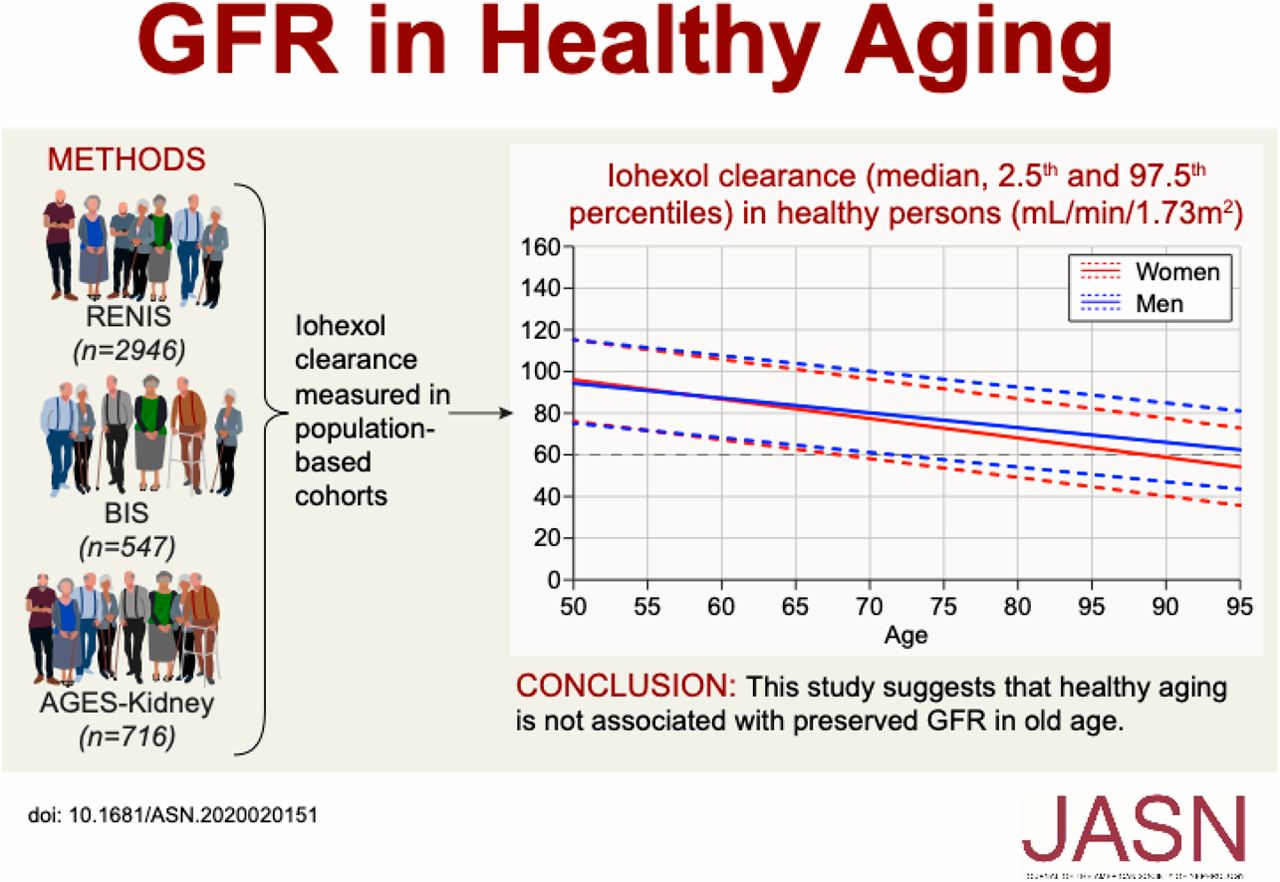GFR in Healthy Aging: an Individual Participant Data Meta-Analysis of Iohexol Clearance in European Population-Based Cohorts
Bjørn O. Eriksen, JASN June 2020,
Significance Statement
In populations, mean GFR is lower in older age, but whether healthy aging is associated with preserved rather than lower GFR in some individuals is unknown. In a meta-analysis of three large European-based cohorts, the authors investigated the cross-sectional association of being healthy (defined as having no major chronic disease or risk factors for CKD), age, and iohexol clearance measurements. The mean and the 97.5th percentile of the GFR distribution were higher in older persons who were healthy than in those who were unhealthy, but lower than in middle-aged people who were healthy. The GFR-age association was more negative in women than in men. These results suggest that, although being healthy is associated with higher GFR in old age, healthy aging is probably not associated with preserved GFR in old age.
Abstract
Background Population mean GFR is lower in older age, but it is unknown whether healthy aging is associated with preserved rather than lower GFR in some individuals.
Methods We investigated the cross-sectional association between measured GFR, age, and health in persons aged 50–97 years in the general population through a meta-analysis of iohexol clearance measurements in three large European population-based cohorts. We defined a healthy person as having no major chronic disease or risk factors for CKD and all others as unhealthy. We used a generalized additive model to study GFR distribution by age according to health status.
Results There were 935 (22%) GFR measurements in persons who were healthy and 3274 (78%) in persons who were unhealthy. The mean GFR was lower in older age by −0.72 ml/min per 1.73 m2 per year (95% confidence interval [95% CI], −0.96 to −0.48) for men who were healthy versus −1.03 ml/min per 1.73 m2 per year (95% CI, −1.25 to −0.80) for men who were unhealthy, and by −0.92 ml/min per 1.73 m2 per year (95% CI, −1.14 to −0.70) for women who were healthy versus −1.22 ml/min per 1.73 m2 per year (95% CI, −1.43 to −1.02) for women who were unhealthy. For healthy and unhealthy people of both sexes, both the 97.5th and 2.5th GFR percentiles exhibited a negative linear association with age.
Conclusions Healthy aging is associated with a higher mean GFR compared with unhealthy aging. However, both the mean and 97.5 percentiles of the GFR distribution are lower in older persons who are healthy than in middle-aged persons who are healthy. This suggests that healthy aging is not associated with preserved GFR in old age.














